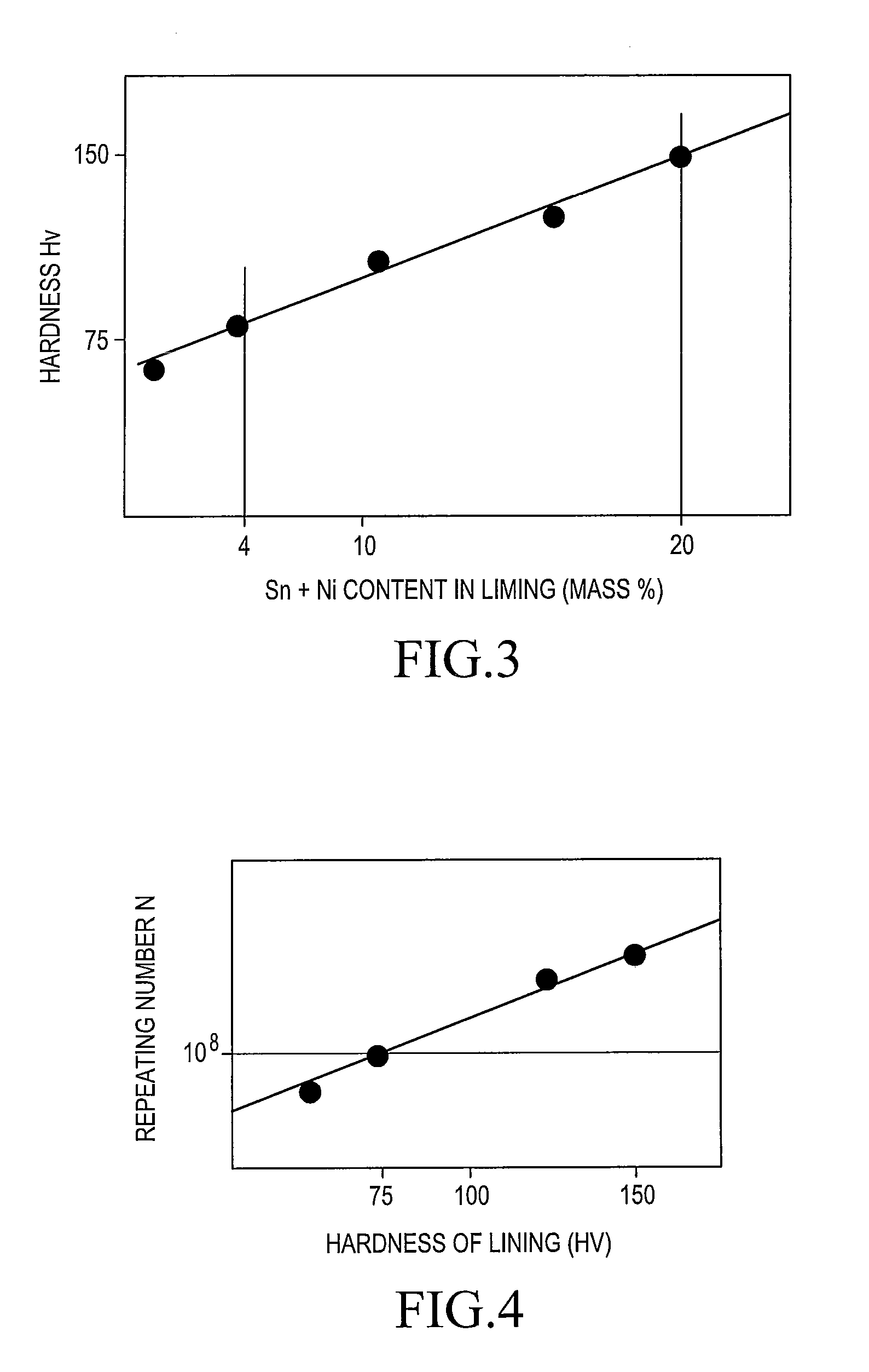Plain bearing
- Summary
- Abstract
- Description
- Claims
- Application Information
AI Technical Summary
Benefits of technology
Problems solved by technology
Method used
Image
Examples
example 1
[0088]Composition of a lining is shown in Table 1. A 1.5 mm thick plain bearing was produced by conventional rolling and forming. Sheet material was subjected to electrolytic degreasing, water rinsing, pickling, and water rinsing. A 10 μm thick overlay was deposited on the sheet material by electro-plating. The conditions for electro-plating were as follows. Identical results were obtained.
[0089]Condition (a):
[0090]Stannous sulfate: 20-30 g / L (in terms of metallic Sn)
[0091]Inorganic ammonium salt: 50-150 g / L
[0092]Organic Carbonic acid: 10-40 g / L
[0093]Bath temperature: 30 degrees C.
[0094]Current density: 0.5 to 5 A / dm2
[0095]Condition (b)
[0096]Sn fluoroborate: 10-20 g / L (in terms of Sn ions)
[0097]Fluoroboric acid: 100-500 g / L
[0098]Gelatin: 0.5-4 g / L
[0099]β naphthol: 0.1-2 g / L
[0100]Bath temperature: 30 degrees C.
[0101]Current density: 0.5-5 A / dm2
[0102]All of the specimens were subjected to heating at 150 degrees C. for 1000 hours, thereby providing a final operating condition of an a...
example 2
[0107]With regard to examples Nos. 1, 2 and comparative examples Nos. 1, 3, the heat treatment was carried out at 200 degrees C. for 5 hours. Then, the seizure resistance test was carried out. The results are shown in Table 2.
TABLE 2ClassificationTest Specimen No.Seizure ResistanceInvention1: Cu—4Sn—0.01Ni72 MPa2: Cu—7Sn—3Ni80 MPaComparative Example1: Cu24 MPa2: Cu—2Sn20 MPa
[0108]Seizure resistance of Test Specimens 1, 2 is further improved over that in Example 1. This indicates that a Cu—Sn diffusion layer having minute convexities effectively enhance seizure resistance. The Cu—Sn diffusion layer is 3 μm thick.
PUM
| Property | Measurement | Unit |
|---|---|---|
| Length | aaaaa | aaaaa |
| Time | aaaaa | aaaaa |
| Percent by mass | aaaaa | aaaaa |
Abstract
Description
Claims
Application Information
 Login to View More
Login to View More - R&D
- Intellectual Property
- Life Sciences
- Materials
- Tech Scout
- Unparalleled Data Quality
- Higher Quality Content
- 60% Fewer Hallucinations
Browse by: Latest US Patents, China's latest patents, Technical Efficacy Thesaurus, Application Domain, Technology Topic, Popular Technical Reports.
© 2025 PatSnap. All rights reserved.Legal|Privacy policy|Modern Slavery Act Transparency Statement|Sitemap|About US| Contact US: help@patsnap.com



